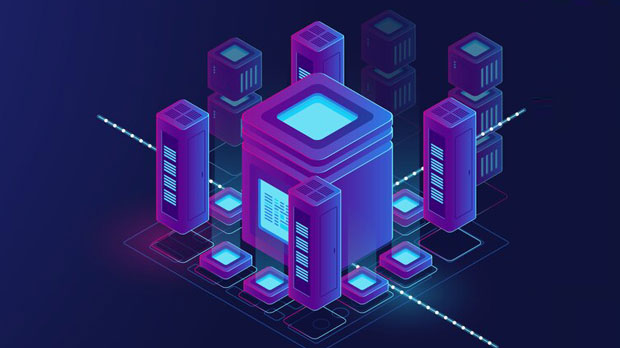In the competitive world of ticketing and inventory management, automation tools have become crucial for streamlining operations, enhancing efficiency, and ensuring real-time data accuracy. Among these tools, Web Unblocker has gained significant attention due to its powerful capabilities in overcoming access restrictions and automating data scraping processes. By providing seamless access to blocked or restricted websites, Web Unblocker plays a pivotal role in ensuring that businesses in the ticketing and inventory sectors can extract up-to-date information with ease, allowing for accurate decision-making and optimized resource management. This article will delve into the core advantages of Web Unblocker in the context of ticketing and inventory automation tasks. 1. Overcoming Website Access RestrictionsOne of the primary challenges in data scraping for ticketing and inventory systems is accessing websites that have restrictive measures in place, such as IP blocks, CAPTCHAs, or geo-restrictions. Web Unblocker is designed to bypass these barriers, ensuring that users can access the data they need without being hindered by such restrictions. This is particularly valuable for businesses that rely on real-time ticket prices, availability, or inventory stock levels, as they are often updated frequently and can be subject to access limitations.By using advanced techniques such as IP rotation, VPN-based access, and CAPTCHA solving mechanisms, Web Unblocker provides uninterrupted access to websites, enabling businesses to continuously gather data without any downtime. This feature is especially useful for industries that require constant monitoring of competitor pricing or ticket sales, as it ensures that the automation process is both reliable and efficient.2. Real-Time Data Extraction for Ticketing SystemsIn the fast-paced ticketing industry, where prices fluctuate rapidly and inventory can be limited, having access to real-time data is critical. Web Unblocker enhances the efficiency of ticketing systems by providing continuous access to up-to-date information, such as ticket prices, seat availability, event schedules, and more.By automating the data extraction process, Web Unblocker allows businesses to monitor multiple ticketing platforms simultaneously, making it easier to compare prices and availability across different channels. This is especially important for ticket aggregators, travel agencies, and event organizers who need to keep their systems updated with the latest information to offer the best prices and availability to their customers.Moreover, real-time data extraction enables businesses to forecast demand trends, adjust pricing strategies dynamically, and optimize sales strategies based on the most accurate and up-to-date information. This capability directly translates into a competitive advantage, as companies can make informed decisions faster and more effectively than their competitors.3. Scalability for Large-Scale Data CollectionAnother major advantage of Web Unblocker in ticketing and inventory automation tasks is its scalability. For businesses that require large-scale data scraping from multiple sources, such as a variety of ticketing platforms, e-commerce websites, or inventory management systems, Web Unblocker can handle significant volumes of data extraction without compromising performance or accuracy.The ability to scale the automation process without additional manual intervention allows businesses to expand their operations while keeping costs low and resources efficient. Web Unblocker can be configured to collect data across hundreds or even thousands of websites simultaneously, making it an ideal solution for businesses looking to track inventory levels across various regions, monitor ticket sales for multiple events, or keep an eye on competitor pricing strategies.4. Data Accuracy and Quality ControlEnsuring data accuracy is critical in ticketing and inventory management. Incorrect or outdated data can lead to mispricing, missed sales opportunities, or customer dissatisfaction. Web Unblocker plays a key role in ensuring the accuracy and quality of the data it extracts by providing mechanisms for validating and cross-referencing the information collected.Web Unblocker’s automation system can incorporate data cleaning processes to remove duplicates, correct errors, and standardize information, ensuring that the data fed into the ticketing or inventory management systems is of the highest quality. This reduces the chances of human error and increases the reliability of the system, which is essential for businesses that rely on precise data to make decisions.Furthermore, Web Unblocker can integrate with other data validation tools or APIs to verify the accuracy of the scraped data in real time, ensuring that any inconsistencies are flagged and corrected immediately.5. Cost-Effective Automation SolutionFor many businesses, automating ticketing and inventory scraping processes is not only a matter of improving efficiency but also reducing operational costs. Web Unblocker provides a cost-effective solution by eliminating the need for manual data collection, which can be both time-consuming and expensive.Instead of relying on human resources to monitor and update data, Web Unblocker automates the entire process, freeing up time and reducing the risk of costly mistakes. The automation also allows businesses to increase their data collection capacity without significantly increasing overhead costs. This is particularly beneficial for businesses that operate on tight margins and need to maximize efficiency across all aspects of their operations.Additionally, Web Unblocker’s scalability means that businesses can easily adapt their data extraction processes as their operations grow, without needing to invest in expensive infrastructure or additional personnel.6. Enhanced Competitive IntelligenceIn competitive markets, having access to the right data at the right time can provide a significant edge. Web Unblocker plays a crucial role in helping businesses gain valuable competitive intelligence by enabling them to monitor competitors' ticket prices, inventory levels, and product offerings in real time.With Web Unblocker, businesses can gather insights on competitors' pricing strategies, promotions, and inventory stock, allowing them to adjust their own strategies accordingly. Whether it's offering better pricing on tickets, promoting a similar event, or adjusting inventory levels to meet customer demand, businesses can make informed decisions based on comprehensive, up-to-date data.By continuously monitoring competitor data, businesses can also identify emerging trends and potential gaps in the market, giving them the opportunity to capitalize on new opportunities and stay ahead of the competition.Conclusion: The Strategic Role of Web Unblocker in Ticketing and Inventory AutomationIn conclusion, Web Unblocker offers a wide range of advantages for businesses in the ticketing and inventory management sectors. From overcoming access restrictions and ensuring real-time data extraction to enabling large-scale data collection and maintaining data accuracy, Web Unblocker provides a powerful automation tool that can enhance operational efficiency, reduce costs, and improve decision-making.By leveraging the capabilities of Web Unblocker, businesses can gain a competitive edge, optimize their operations, and stay agile in an ever-changing market. As the demand for real-time, accurate data continues to grow, Web Unblocker will play an increasingly vital role in helping businesses stay ahead in the ticketing and inventory automation space.
Nov 07, 2025



































































